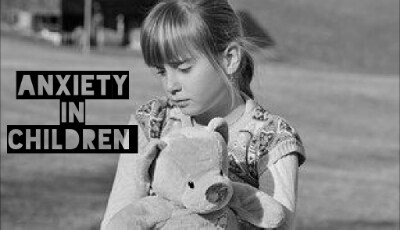What is consent?
According to the University of Michigan Policy on Sexual Misconduct by Students, consent is defined as,
“… a clear and unambiguous agreement, expressed in mutually understandable words or actions, to engage in a particular activity.
Consent can be withdrawn by either party at any point. Consent must be voluntarily given and may not be valid if a person is being subjected to actions or behaviors that elicit emotional or psychological pressure, intimidation, or fear.
Consent to engage in one sexual activity, or past agreement to engage in a particular sexual activity, cannot be presumed to constitute consent to engage in a different sexual activity or to engage again in a sexual activity.
Consent cannot be validly given by a person who is incapacitated.
At the heart of consent is the idea that every person has a right to personal sovereignty – the right to not be acted upon by someone else in a sexual manner unless they give that person clear permission. It is the responsibility of the person initiating the sexual activity to get this permission.”
How do we teach our children about consent?
We all want our children to be safe, to be in healthy relationships, to grow up and be respected when they say no, and to respect others when they say no. So how do we ensure that our children aren’t on the receiving or giving end of violating another person’s personal sovereignty?
- Ask your child for their consent often. “May I hold your hand?” “Would you like a hug?” If they say no, accept that graciously. Even with my littlest one’s I will say, “may I change your diaper?” If she is excited to get into the bath I will still ask, “can I take your shirt/pants off?”
- Allow your child to tell you no, always. Here is an article about why we should always allow our children to tell us no. Children don’t miraculously learn to say no once they leave home as an adult. They need a lot of opportunities and practice saying no to whatever situation arises in their childhood that they don’t agree with, even if that no is to a parent.
- Model how a “yes” can turn into a “no.” Our children are often better teachers at this than we are. Tickling may start out fun and then turn into protest which means to cease immediately. Or one child chasing another and both having fun, then the child being chased decides they don’t like it anymore which is a moment to show that a yes can turn into a no and that we must respect that. Or a child playing rough with a parent and both having fun, but it gets a little too rough so the parent says they don’t like that (or the child says they don’t like that), so everyone becomes more gentle or stops to respect that boundary.
- Never force affection. Here is a more in-depth look at why we shouldn’t force affection, even with family. I’ve seen it so many times when children are greeted by a family member or friend. A child is coerced or forced or shamed for giving (or not giving) affection to someone. That person (that is an adult) gets their feelings hurt and will push guilt onto a child for not being physically affectionate against their will. I’ve heard, “if you love me, you should give me a hug.” Our children aren’t here to make other people comfortable, to be manipulated, to be guilted or shamed for saying no to physical affection (or saying no to anything, really). They are their own person. They are responsible for their own own autonomy just as we are responsible for our own reactions.
- Educate them about their bodies. Label body parts correctly. Talk about following hunger cues. Talk about how no one has a right to touch their body if they don’t want it, and that they absolutely can and should say when they don’t want or like something that is happening to them. This can be difficult with non-negotiable things like changing a dirty diaper, brushing teeth, or specific doctor’s appointments, but do these things in a cooperative and compassionate way. For the non-negotiables, we explain why they are necessary for keeping their body safe and healthy. All of these things will help empower our children so that they know how their bodies work and that their voices matter when it comes to their autonomy.
Consent is a learned behavior.
In Carol Black’s brilliant piece she writes:
“…Learning -– like all human relationships –– must be based in the ethical principal of non-interference, in the right of all human beings to make their own choices, as long as they’re not interfering with anybody else. As Nishnaabeg scholar and author Leanne Betasamosake Simpson tells us, learning –– like all human relationships –– must be based in the ethical principal of consent, in the right of all human beings to be free of violence and the use of force. Simpson explains:
If children learn to normalize dominance and non-consent within the context of education, then non-consent becomes a normalized part of the ‘tool kit’ of those who have and wield power… This is unthinkable within Nishnaabeg intelligence.”
So many aspects of a child’s life are doused in non-consent. They often don’t get to choose whether they attend school or not. They have zero choice in what is taught at school. They usually have little say or power in what goes on in their day to day life beyond simple choices of, “what color cup would you like?” or, “What would you like to wear to today (although this option can be eliminated when school uniforms are in effect)?”
It is our job, as parents, to discuss and model consent from the youngest newborn to our almost adult teens. Tell that relative or friend that, “Little Johnnie said he doesn’t want a hug right now. We don’t force affection.” Roughhouse and have fun and sportscast that, “little brother was having fun playing rough, but he is saying no now. So we have to stop being rough with him.” We have to be consistent and constant with reinforcing our child’s words to other people. We are their advocates and are there to ensure that their voice is heard and respected. Non-consent will be modeled frequently outside of the realm of physical affection, so modeling consent is of the utmost importance to teaching our children that their body is their body. They are not an object. They are not a pawn. They are not to be controlled or manipulated.



No Comments